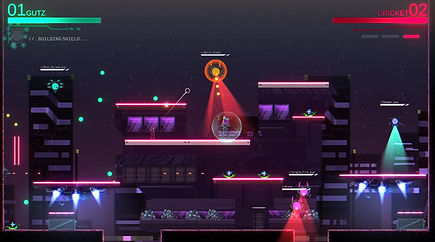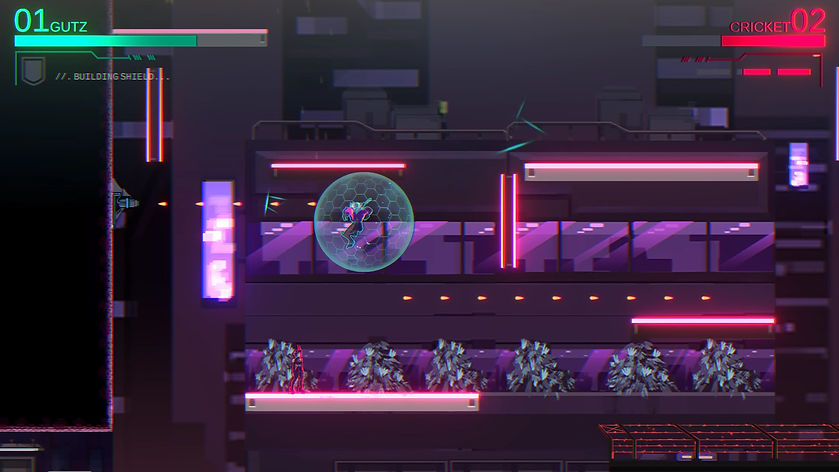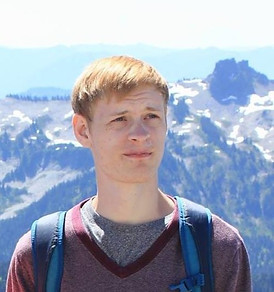Project; Gemini
Project: Gemini is a Co-op Action Platformer about running and gunning your way out of a robot controlled cyber city.

Development
Made by a team of 13 people over the course of 8 months.
Role: Creative Director, Level Designer, Systems Designer
Editor: Custom Engine
Responsibilities Included;
-
Creating game vision
-
Prototyping game mechanics
-
Game balancing
-
Level Design and Iteration
In addition to these tasks, I worked closely with all team members to ensure that the game vision was being upheld.
Reflection
This was the first cross disciplinary team project that I and everyone else had worked on. We not only developed our respective skills over the course of the project, but also learned to importance to team communication and how it relates to delivering and final product. The path we chose to go down involved an asymmetric co-op platformer with a cyberpunk setting. Challenges I faced included platform readability, coherent level and encounter flow, and most of all, ensuring that both asymmetric characters were fun and engaging to play.

System Design
The core mechanics of the game changed a LOT over the course of development. I was in charge of early prototypes, player abilities, enemy designs and balancing. Where we started is wildly different from where we ended up, making sure to test and get feedback every step of the way.
The primary driving force of the mechanics was the pillar of co-operation. We really wanted the players to rely on each other to be able to progress through the game. I put pen to paper (or code to computer) and started generating prototypes. After some iteration and thought on the subject, I decided to try making the two characters unique from each other. This way, both players would be empowered in there own right. However, I recognized that while it was a goal to have them work together, it was something better encouraged rather than forced.

This is where the player abilities started to take shape. While I knew making them different and unique, it was important they shared a baseline to create a connection and understanding between them. I decided this would come in the form of their mobility. Move speed, jump height and the defensive dash mechanic were all shared by both characters. This left their uniqueness to form through their combative abilities. Due to time, resource, and budget restraints, I thought it best to restrict each character to a basic attack and special move.

One of the more obvious combat axis is ranged vs melee. I started here and began to think of potential specials to add to each. Coming back to the focus of encouraged co-operation, I began to think on how these two abilities might be able to create a positive feedback loop. The melee characters needs were a reliable way to soak and deal damage, while the ranged character was more vulnerable and dealt less burst damage.
Through deep analysis and testing, I ended up creating a stun bullet for the ranged character and an activatable shield for the melee character. A stunned enemy becomes an easy and vulnerable mark for the melee character to hit, while the shield not only help to protect both characters, but also generates more of the special stun ammo for the ranged character to use. Voila, a positive feedback loop that players are not forced into using, but rather encouraged to engage with.
Level Design
The vision for the level started with the big picture and questions. How can we get the players from point A to point B? What areas are they travelling through to get there? How can I introduce challenges and new things at an engaging pace?
Before I even started sketching out levels on paper, I took stock of all the levers I had to pull... all the tools available in the tool belt. This started with the player abilities and the need to tutorialize them, moving onto the enemy and environmental effects we had available. After they were all listed in one place, I categorized them. I focused on two axis during categorization; Complexity and Strength. More complex and strong concepts/enemies would be introduced later in the level, while weaker and less complex concepts would be introduced sooner. This would later to help build a natural difficulty curve and you progress through the level, while also keep things fresh and engaging.

One problem we kept running into as a platforming run and gunner was the player's ability to ignore everything and run as fast as they could through the level. I don't necessarily the tactic is bad at its core, but the ability to use this singular tactic to beat an entire game is not a good thing. To address this, I pitched that we weave locked arena rooms between these more open platforming sections. To make the platforming a little more engaging than simply 'run to the next arena' I opted to add locked doors that you need to open by hitting a lever. Not necessarily a difficult task, but something to create more interest.
After the paper sketches were completed and successfully ported into the engine, there was a lot of testing done. I paid close attention to what ideas I executed on worked, worked well, and which ones failed to work the way I intended. Enemy combinations and placements that were too powerful. Areas where players struggled to come up with a plan of attack. Platforms that looked like there were within reach but weren't.

Using my knowledge of what did work in combination of my intentions for a given arena or region, changes were made, and made again, until we had something good. Then more changes were made until we had to ship.
Shane Staller
Level & Systems Game Designer

